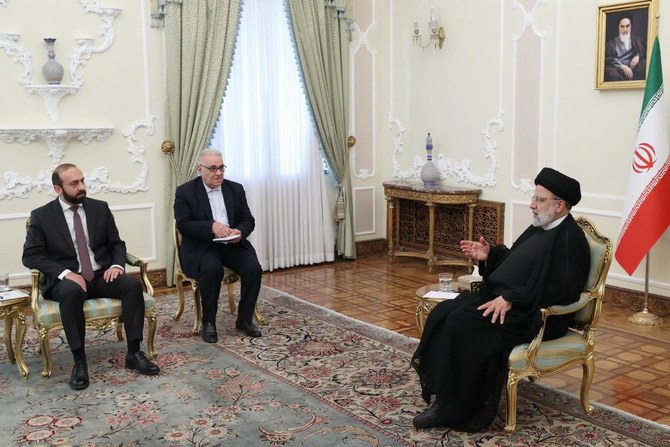Armenia and Azerbaijan came together in Tehran on Monday for critical talks aimed at reconciliation. However, even as these diplomatic efforts got underway, Azerbaijan concurrently announced joint military exercises near its border with Armenia. These developments have sparked concerns about the stability in the South Caucasus region. Hosted by Iran and attended by envoys from Turkey, Russia, and Iran, this meeting is being closely monitored as an opportunity to restore peace. As Iran’s Foreign Minister, Hossein Amir-Abdollahian, emphasized, it might be the cornerstone in the arduous journey towards establishing lasting peace in the South Caucasus, with the active participation of regional stakeholders and neighbors.
Iran-Hosted Talks Aim to Forge Peace in the Caucasus
The Iran-hosted talks in Tehran have assumed paramount significance, given the escalating tensions in the South Caucasus. The meeting, which included envoys from Armenia, Azerbaijan, Turkey, Russia, and Iran, symbolizes a concerted effort to diffuse hostilities and explore avenues for reconciliation. Iran’s Foreign Minister, Hossein Amir-Abdollahian, expressed hope that this gathering could provide the foundation for a path towards enduring peace and resolution of the challenges that have plagued the region for years.
The backdrop of these discussions involves Moscow’s persistent endeavor to diminish Western influence in the Caucasus, an area it traditionally considers its sphere of influence. The original plan for these talks, known as the “3+3 format,” aimed to include Georgia, but the latter, aspiring to join the European Union and NATO, declined the proposal. Amid these developments, both the European Union and the United States have intensified their mediation efforts, seeking a comprehensive peace agreement between Armenia and Azerbaijan, thereby reducing Russia’s role in the region.
Azerbaijan Launches Joint Drills Near Armenian Border
While Armenia and Azerbaijan seek reconciliation through dialogue, the situation remains precarious, as Azerbaijan initiated joint military exercises near its border with Armenia. The Azerbaijani Defense Ministry announced these maneuvers, named “Mustafa Kemal Ataturk 2023,” involving up to 3,000 troops, artillery weapons, and aviation. The exercises are ostensibly aimed at enhancing combat interoperability between Azerbaijan and its ally, Turkey.
These military drills come mere weeks after Azerbaijan successfully reclaimed the Nagorno-Karabakh region from pro-Yerevan separatists in a swift and intense operation, marking the end of decades of Armenian separatist rule. This maneuver has fueled concerns that energy-rich Azerbaijan might attempt to expand its territory, particularly by creating a corridor connecting its Nakhichevan exclave with the rest of Azerbaijan by capturing lands in southern Armenia, along the Iranian border. Iran is apprehensive about such a corridor, as it would establish a direct land link between Azerbaijan and its historical rival, Turkey.
Lingering Disputes Threaten Regional Stability
The ongoing tensions between Armenia and Azerbaijan, in the aftermath of the Nagorno-Karabakh seizure, threaten the stability of the region. Armenia is concerned that Azerbaijan, with the backing of Turkey, may attempt to establish the so-called Zangezur corridor, connecting Nakhichevan with Azerbaijan through Armenian territory. However, Armenia has stated its willingness to reopen transport routes between mainland Azerbaijan and Nakhichevan, provided its sovereignty over the area is not challenged. Azerbaijan has denied any territorial claims against Armenia.
Nagorno-Karabakh, internationally recognized as part of Azerbaijan but populated primarily by ethnic Armenians, has been a longstanding source of conflict between Yerevan and Baku. The region was at the center of two wars in the early 1990s and, more recently, in 2020. Following a blockade and a lightning offensive by Azerbaijan in September 2023, separatist authorities agreed to reintegrate with Azerbaijan, leading to the exodus of almost the entire ethnic Armenian population and sparking a refugee crisis.















